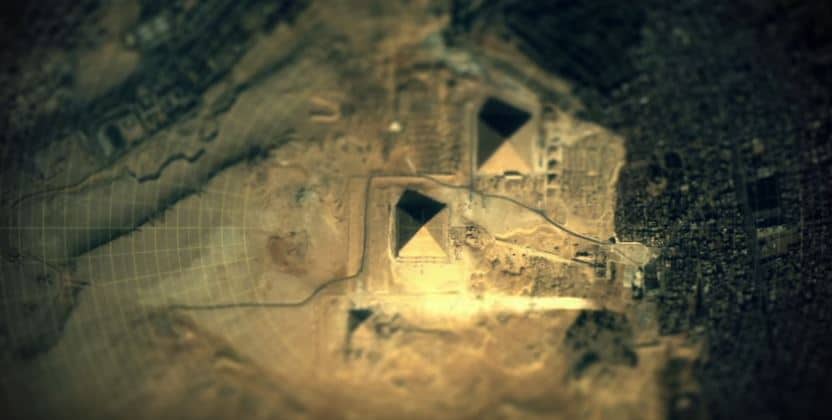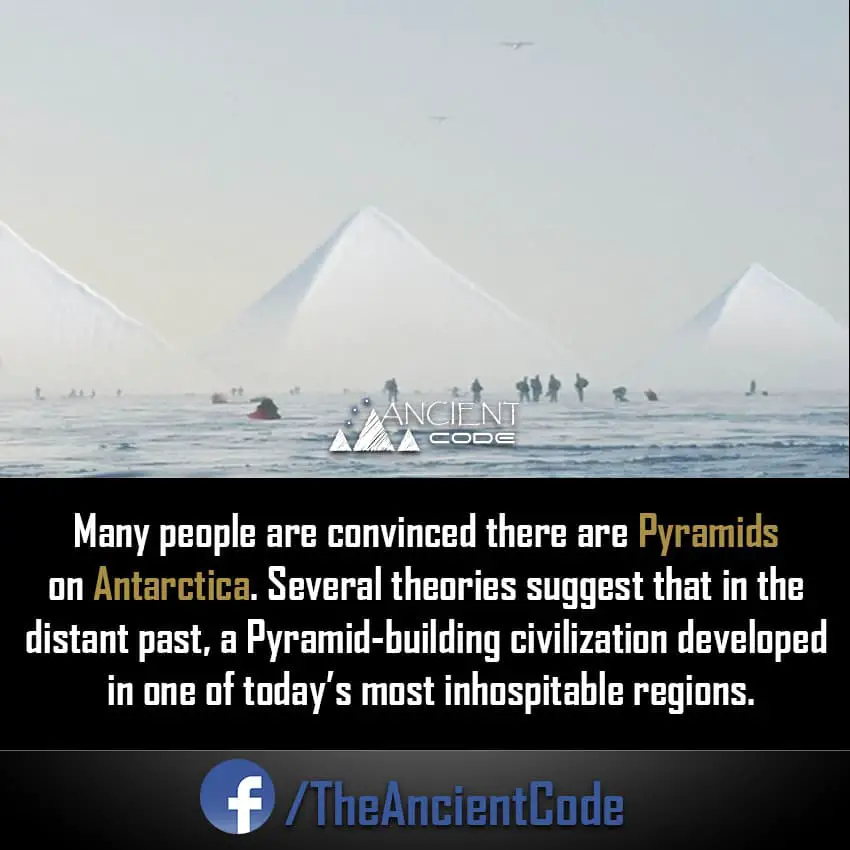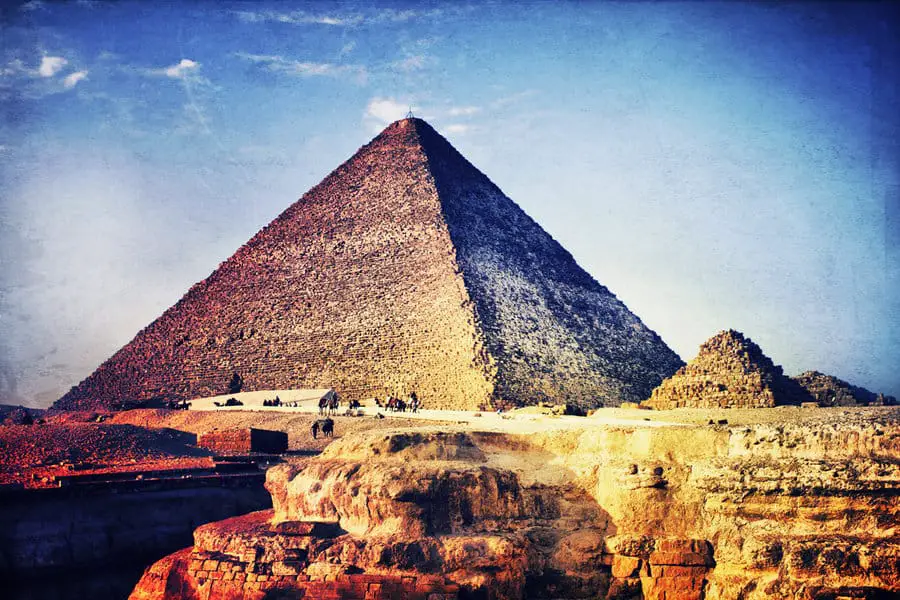
Despite the fact that throughout the millennia ancient civilizations built incredible structures across the planet, the Great Pyramid of Giza outshines nearly all of them.
Considered a masterpiece and wonder of ancient engineering and ancient man’s achievement, the Great Pyramid of Giza is one structure we wouldn’t be able to replicate today.
Historical analysis shows that the Pyramids were built between 2589 and 2504 BC, but despite this, there are many authors and researchers who argue that the pyramids, and Sphinx at Giza, were built much earlier than 2500 B.C.

Despite having studied, researched and explored the pyramid for centuries, mainstream scholars have been unable to understand how the builders of the structure managed to erect such a precise monument, thousands of years ago, without the use of modern tools and technologies.
It was built using milestone and granite, and mortar experts have not been able to reproduce.
It is believed that the Great Pyramid was commissioned by Khufu, and was built as a tomb over a 10- to 20-year period concluding around 2560 BC.
The Pyramid’s ancient name was Khufu’s Horizon.
Oldest and Largest of the Three
Khufu’s pyramid, known as the great pyramid of Giza, is the oldest and largest, rising at 481 feet (146 meters).
Tallest Structure
Archeologists say it was the tallest structure in the world for about 3, 800 years.
The First Wonder of The World
The ancient Greeks placed the Great Pyramid of Giza as the first wonder of the world. Curiously, the Great Pyramid of Giza is the only one of the seven ancient wonders still remaining to this day.
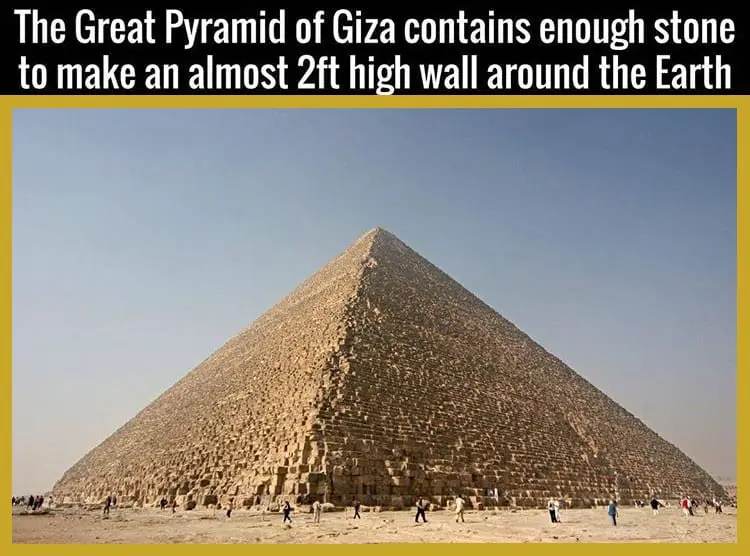
The height of the Great Pyramid is 139 meters. The Great Pyramid has a width of 230m.
Our planet’s circumference is 40,075,000m.
2 feet in meters: 0.6096m
So, the volume of the Pyramid is:
2302 * 139 * (1/3) = 2,451,033 m3 = 2.4 x106 m3
Suppose the width of the wall is X m.
Then, the volume of the wall is: (40,075,000 * 0.6096) * X = 24,429,720 * X m3 ~ 24×106 * X m3
Now since 2.4×106 / 24×106 = 0.1, we have that, for the statement to be true, the width of the wall must be no wider than 10cm or about 0.33 feet. Source
Not a Tomb
Despite the fact that many researchers firmly believe the Great Pyramid of Giza was built to serve as the eternal resting place of the Pharaoh, experts have not found a single piece of evidence to suggest the Great Pyramid was intended to serve as a tomb.
In fact, researchers have never discovered any hieroglyphics or ancient text that links the Pyramids to tombs.
When it was first entered by the Arabs in 820 AD, the only thing found in the pyramid was an empty granite box in the King’s chamber called the “coffer.” (source)
No mummy
No mummy or remains of any kind have been found inside the great pyramid of Giza. Interestingly, it seems that there never was a mummy there, and it does not seem likely that the pyramid had been robbed in the distant past.
First Entered Into
The Pyramid was first entered by the Arabs in 820 AD. The only thing found in the pyramid was an empty granite box in the King’s chamber.
The Great Pyramid of Giza is the Most Unique Structure Ever Built
Not only is the Great Pyramid noteworthy for its sheer size and megalithic blocks of stone, the shape of the Great Pyramid is unlike any other: It is the only EIGHT SIDED Pyramid in Egypt.
Concave Faces
The four faces of the Great Pyramid of Giza have been found to be slightly concave. It is the only pyramid to have been built this way.
An Eight Sided Pyramid Whose Exact Shape Cna Be Seen Only From the Air, and on Spring and Autumn Equinoxes
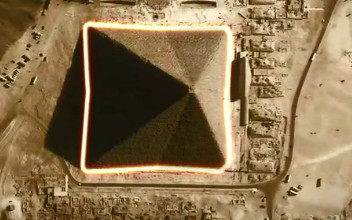
The centers of the four sides of the Great Pyramid are indented with an extraordinary degree of precision forming the only 8 sided pyramid; this effect is not visible from the ground or distance, but only from the air and then only under the proper lighting conditions.
This phenomenon has remained a mystery for thousands of years mainly because it is only detectable from the air at dawn and sunset on the spring and autumn equinoxes when the sun casts shadows on the pyramid.
Millions of Stones
The pyramid is estimated to have around 2,300,000 stone blocks that weigh from 2 to 30 tons each and there are even some blocks that weigh over 50 tons.
The Curious Base of the Pyramid
The base of the pyramid covers 55,000 m2 (592,000 ft 2) with each side greater than 20,000 m2 (218,000 ft2) in area.
Constant Interior Temperature
The interior temperature is constant and equals the average temperature of the earth, 20 Degrees Celsius (68 Degrees Fahrenheit).
The Great Pyramids Outer Mantle
Another fascinating act about the Great Pyramid of Giza has to do with its outer mantle. According to experts, the outer mantle was composed of 144,000 casing stones.
The Pyramids Outer Mantle Accuracy
All of 144000 casing stones that made up the outer mantle of the Great Pyramid were highly polished and flat to an accuracy of 1/100th of an inch, about 100 inches thick and weighing approx. 15 tons each.
A Pyramid That Survived the Test of Time
Have you ever asked yourself how the PYramid of Giza survived thousands of years without any significant structural damage? It was a massive structure built with advanced engineering methods. The cornerstone foundations of the pyramid have ball and socket construction capable of dealing with heat expansion and earthquakes.
Mystery Mortar
The mortar used in the construction of the Great Pyramid of Giza is of an unknown origin (Yes, no explanation was given).
Mortar Experts Cannot Reproduce
The mortar used in the construction process of the Great Pyramid of Giza has been analyzed and while its chemical composition is known, it cannot be reproduced. It is stronger than the stone and continues to hold the Pyramids stones until today.
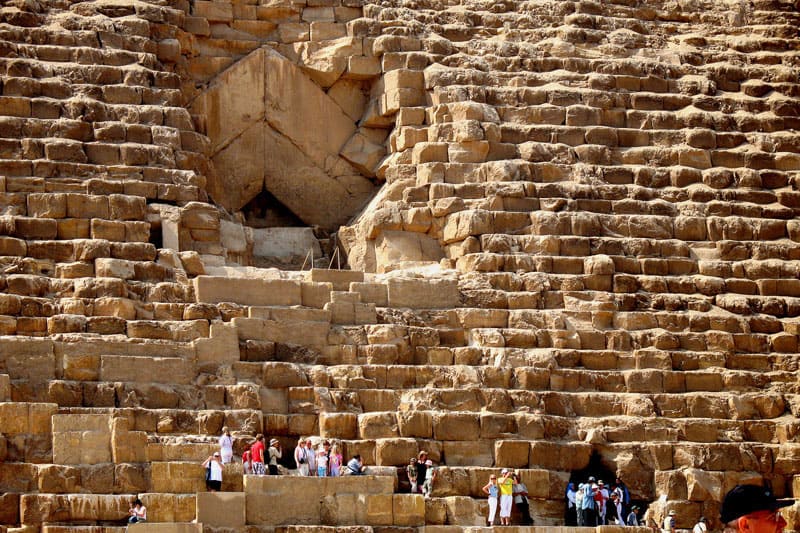
Great Pyramid’s Casing Stones
Even though the Great Pyramid of Giza looks real badass today, it looked even cooler when it was just built. It was originally covered with casing stones(made of highly polished limestone).
Casing Stones as Bright as a Star
The Casing stones that were used to cover the Great Pyramid of Giza are said to have reflected the sun’s light off the surface of the Pyramid, making the monument shine like a star.
Stolen Casing Stones
The Casing stones once present on the surface of the Pyramid are no longer there. They were used by Arabs to build mosques after an earthquake in the 14th century loosened many of them.
Meet ‘Ikhet’
Appropriately, the ancient Egyptians called the Great Pyramid “Ikhet,” meaning the “Glorious Light.”
Unique Features
The Great Pyramid of Giza is the only pyramid in Egypt that has both descending and ascending inner passages. All other pyramids of Egypt have descending passages.
The Great Pyramid’s Airshafts
There are a number of airshafts built into the pyramid. Airshafts are present inside the Kings and Queen’s chambers. However, the purpose of these airshafts remains a mystery.
Three Chambers
There are three known chambers inside the Great Pyramid.
Aligned True North
The Great Pyramid is the most accurately aligned structure in existence and faces true north with only 3/60th of a degree of error. The position of the North Pole moves over time and the pyramid was exactly aligned at one time.
Center of Land Mass
he Great Pyramid is located at the center of the land mass of the earth. The east/west parallel that crosses the most land and the north/south meridian that crosses the most land intersect in two places on the earth, one in the ocean and the other at the Great Pyramid.
The Coffer Of The King’s Chamber
Inside the King’s Chamber is a granite coffer which many Egyptologists argue was intended to serve as the tomb of the Pharaoh. However, the chamber is too big to fit through the passages. It must have been put in place during construction.
No markings on the Coffer
Archaeologists have not found any markings on the coffer of the King’s chambers. If this coffer was really intended to house the remains of the Pharaoh, it surely would have had hieroglyphs and various depictions on it.
Solid Granite
The coffer was made out of a block of solid granite.
Mystery machinery used to carve the coffer
There are many authors that argue that the ancient Egyptians used advanced machinery in ancient times. When it comes down to the construction of the coffer inside the King’s chamber, it is argued by experts that to work a block of solid granite, its builders would have required bronze saws 8-9 ft. long set of teeth of sapphires.
Hollowing out of the interior would require tubular drills of the same material applied with a tremendous vertical force.
Microscopic Analysis
Microscopic analysis of the coffer reveals that it was made with a fixed point drill that used hard jewel bits and a drilling force of 2 tons.
Great Pyramid Focuses Electromagnetic Energy
A team of German and Russian researchers has discovered that the Great Pyramid of Giza, focuses electromagnetic energy in its chambers and concentrates the electromagnetic energy in its lower part, located beneath the surface.
A Pyramid That Behaves Like a Resonant Cavity
The pyramid behaves like a resonant cavity, like a resonator – a device that oscillates at certain frequencies with a greater amplitude to others – that attracts and amplifies the radio waves.
Accumulating Energy
Researchers have discovered that the ancient monument interacts with limestone blocks. It accumulates its energy in the “king’s chamber” and then directs it to a point just below its base, where the third of the four chambers discovered so far is located.
Unexplored parts
While we know what the pyramid looks like from the outside, its interior is far more mysterious. Numerous archeological missions have tried to understand what the Great Pyramid looks like from the inside. The ScanPyramid project, for example, has found using muon tomography massive, never-before-seen voids inside the Pyramid.
The Big Void
Above the Pyramids so-called Grand Gallery is a massive unknown structure that has still not been explored. It has been dubbed as the Big Void.
The mystery Void
The void looks like a corridor, it has remained hidden behind the chevrons of the North face of the pyramid for centuries. The mystery void’s minimum length is 30 meters and is located between 50 to 70 meters from the ground. Scientists say it is most likely composed of one or more internal structures.
Mystic Experiences
Historical figures such as Alexander the Great, Julius Caesar and Napoleon, ventured to spend a night inside this monument where, presumably, they had experiences of a “mystical” nature.
Swivel door
The Great Pyramid had a swivel door entrance at one time. Archeologists have discovered Swivel doors in only two other pyramids: Khufu’s father and grandfather, Sneferu and Huni, respectively.
Ancient Security System
According to historic accounts, when the pyramid was first entered into, the swivel door, weighing around 20 tons, was so well balanced that it could be opened by pushing out from the inside with only minimal force.
However once closed, it was so perfect a fit that it could scarcely be detected and there was not enough crack or crevice around the edges to gain a grasp from the outside.
Earth’s Mass
The weight of the pyramid is estimated at 5,955,000 tons. Multiplied by 10^8 gives a reasonable estimate of the Earth’s mass.
Earth’s Volume
The Great Pyramid’s volume and density times 10^15 equals the ratio of volume to the density of the earth. [10,339,823.3 cubic cubits * 0.4078994 * 10^15 = 4.21760772 x 10^21 cubic cubits = 259.93 x 10^9 cubic miles]
Astronomical Alignment
While we still have no idea what the ascending and descending passages were built for, according to calculations, the Descending Passage pointed to the pole star Alpha Draconis, circa 2170-2144 BCE. This was the North Star at that point in time. No other star has aligned with the passage since then.
Southern Shaft
The southern shaft in the King’s Chamber pointed to the star Al Nitak (Zeta Orionis) in the constellation Orion, circa 2450 BCE The Orion constellation was associated with the Egyptian god Osiris. No other star aligned with this shaft during that time in history.
Sun’s Radius
Twice the perimeter of the bottom of the granite coffer times 10^8 is the sun’s mean radius. [270.45378502 Pyramid Inches* 10^8 = 427,316 miles]
Mean Distance to the Sun
Half of the length of the diagonal of the base times 10^6 = average distance to the sun. Mean The height of the pyramid times 10^9 represents the mean radius of the earth’s orbit around the sun, or an Astronomical Unit (AU). [5,813.235565376 Pyramid Inches x 10^9 = 91,848,816.9 miles]
Curvature
The curvature designed into the faces of the Great Pyramid of Giza exactly matches the radius of the earth.
Pi (p) and Phi (F)
The relationship between Pi (p) and Phi (F) is expressed in the fundamental proportions of the Great Pyramid.
The Calendar Year
It seems that the builders of the Pyramid had a thing for math, and astronomy as well. If we take a look at the length of a base side of the pyramid we find it is 9,131 Pyramid Inches measured at the mean socket level or 365.24 Pyramid Cubits. This happens to be the number of days in a year [9,131/25 = 365.24, accurate to 5 digits].
Copyright Ancient Code. Unless otherwise stated by Ancient Code, no Content published on www.ancient-code.com, www.ancient-code.es may be copied, distributed, published, rewritten or used in any way, in whole or in part, without prior written agreement from Ancient Code.
Reference:
The Great Pyramid: A Miracle in Stone, 1973, Joseph A. Seiss
Secrets of the Great Pyramid, 1978, Peter Tompkins
Back in Time 3104 B.C. to the Great Pyramid, 1990, S. G. Taseos
The Authorship and Message of the Great Pyramid, 1953, Julian T. Gray, E. Steinmann & Co.
Our Inheritance in the Great Pyramid, 1891, C. Piazzi Smyth
http://www.timstouse.com
http://www.gizapyramid.com/general.htm
Featured Image Credit: Getty/JimPix

